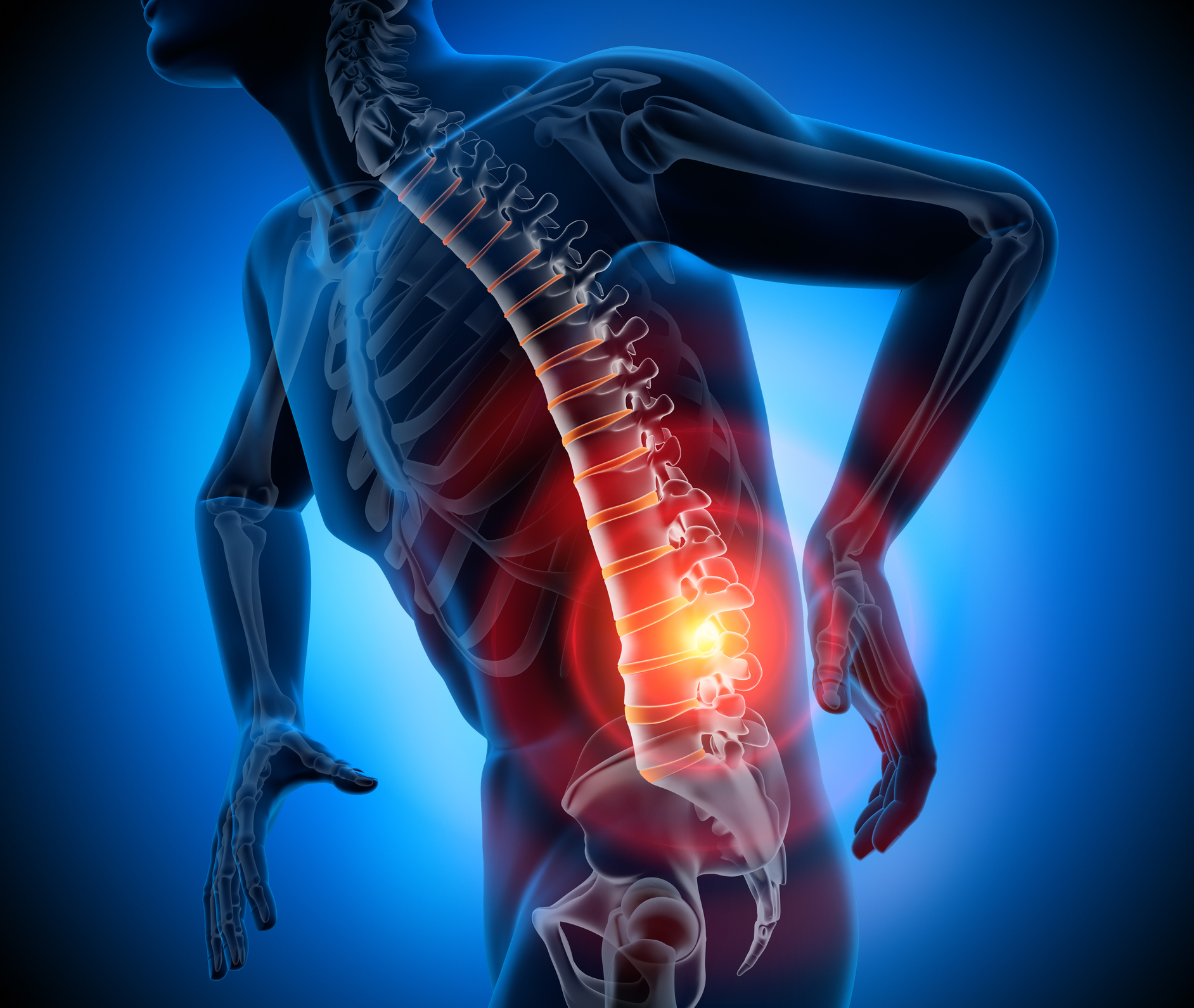Pain management is a multidisciplinary approach aimed at reducing and alleviating pain, enhancing quality of life, and improving overall well-being. It involves the assessment, diagnosis, and treatment of both acute and chronic pain conditions. Pain management techniques encompass a wide range of modalities. The goal of pain management is not only to provide temporary relief but also to address the underlying causes of pain, improve functionality, and empower individuals to actively participate in their own care. By tailoring treatment plans to meet the specific needs of each patient, our pain management strives to optimize pain control and enhance the overall quality of life for those suffering from pain.

Discography is a diagnostic test to identify which disc(s) is the source of the chronic back pain. After cleansing the surrounding area of skin and inserting the needle with X-ray guidance, contrast dye is injected into specific discs to pressurize the disc and determine which ones are causing the pain. This diagnostic test may be recommended for those who suffer from chronic groin, hip, back, or leg pain; it will identify the source(s) of the pain, which assists the surgeon in his decision on what levels need surgical intervention. Following the procedure, patients will be sent for a post-discography CT Scan.
First, images of your spine structure are taken with an X-ray (fluoroscopy) system to indicate the exact location of various discs. Next, local anesthetic is injected into the skin and tissue to numb the area. A needle is then inserted in the center of a disc, using contrast dye for exact and accurate placement. The disc is then pressurized using a pressure monitor to attempt to replicate the patient’s pain. The procedure requires roughly 30 to 45 minutes to complete, after which your specialist will monitor you and release you to have a post-discography CT scan.
Epidural steroid injections, commonly referred to as ESIs, are an effective method of treating inflammation and the resulting back pain. The ESI injections reduce nerve inflammation that is caused by a narrowing of the spinal passage through which the nerves travel. This treatment is guided by X-ray, and it is performed by carefully injecting the anti-inflammatory medication into the epidural space. The epidural space is inside the bony spinal canal, outside of the tube holding the spinal fluid - thecal sac. Local anesthetic may be injected in conjunction with the steroid medication. Several methods may be employed:
The lower back will is cleansed and sanitized, and an injection of local anesthetic is administered to numb the area. Live X-ray guidance is used to guide the insertion of the needle into the epidural space, and the needle location is confirmed by injecting contrast dye. The steroid is then slowly injected, after which the patient will rest, be monitored for a short period of time, and then discharged.
Facet injections are a kind of treatment that utilize local anesthetic and/or steroid medication to anesthetize facet joints. The facet joints are what give the spine its flexibility, allowing for twisting and turning.
During this procedure for pain management in NYC, the skin is first cleansed, and then the skin and tissue above the facet joint (in neck or back) are numbed with a local anesthetic. Using live X-ray guidance, a small needle is inserted into the facet joint space or adjacent to the nerve. The medication is then delivered into the target area, requiring between ten to thirty minutes to complete.

The sacroiliac joint (SI) is located in the pelvis, linking the pelvis (iliac) to the lowest part of the spine above the tailbone (sacrum). Sacroiliac joint injections are comprised of steroid medication as well as local anesthetic, which are injected into the joint itself.
These injections can be used in two ways:
The injection site is sterilized and numbed with local anesthetic. Using X-ray guidance, the needle is inserted into the sacroiliac joint. Contrast will be injected (X-ray dye) to ensure accurate needle placement, after which the steroid is injected to relieve the chronic pain.
The piriformis is a muscle that connects from the front of the tailbone to the outside of the hip. The sciatic nerve may go through the piriformis or may exit below the muscle. The sciatic nerve can be irritated by the muscle, leading to leg or foot numbness or pain. Piriformis injections can be used as a diagnostic and therapeutic solution, identifying and treating the piriformis muscle as the source of leg or buttock pain. The injections contain cortisone and local anesthetic. The cortisone reduces inflammation and swelling in an effort to reduce pain, and the local anesthetic temporarily relaxes the muscle.
The injection site is first sterilized, after which an X-ray (fluoroscopy) is used for exact and accurate needle placement. Both anesthetic and steroid are injected, assisted by X-ray (contrast) dye. The entire procedure is complete within about 10 minutes.
Lumbar sympathetic blocks are an injection of medication into your back, to relieve lower back and leg pain. These injections are administered along the outside of the spine and may be the appropriate NYC pain management treatment for several conditions. Some of these conditions are:
First, your lower back will be sterilized and a local anesthetic is injected to numb the treatment site. A thin, hollow needle is carefully inserted, guided by live X-ray images, and the steroid medication is administered. You may feel some numbness, pressure, or weakness in the limb.
During hip joint injections, medication is injected directly into the hip joint to diagnose or treat chronic hip pain.
Live X-ray (fluoroscopy) and contrast dye are used to guide exact and accurate needle placement. The injection site is sterilized. Local anesthetic is injected, and then the steroid medication is slowly and gently injected into the hip joint. You may experience a sensation of pressure and minor pain during the injection. Some patients are more comfortable with IV sedation, which is another option.

A trigger point is a tight or knotted muscle that triggers pain signals to another part of your body when pressure is applied. Trigger point injections reduce inflammation by relaxing the tight muscle, promoting recovery and healing as well as improving blood flow.
The injection site is sanitized, and then a small needle is placed into the painful muscle, administering a mixture of anesthetic and medication. The entire process takes only a few minutes to perform.
A bursa is a fluid-filled sac, lubricating the motions of muscles moving over a bone. When a bursa is inflamed, these injections can reduce chronic pain that is commonly associated with bursitis, arthritis, and other inflammatory conditions. These injections can be administered to either diagnose the source or relieve chronic pain in the hip.
The area to be treated is first cleaned and draped. The treatment area will be numbed with local anesthetic. Using X-ray guidance, the needle will be placed in the exact location required, after which the local anesthetic and steroid medication are injected. The procedure is then complete, taking a total of only ten to fifteen minutes.
The stellate ganglion is a set of nerves in the front of the last vertebrae of the neck structure. These nerves are part of the sympathetic nervous system. When these nerves have been previously affected by trauma, infection, or other conditions, it can result in chronic pain. A stellate ganglion block involves injecting pain-relieving medication into the area, in an effort to reduce the release of certain chemicals that activate the pain sensitivity in these nerves. The procedure involves X-ray (fluoroscopy) guidance for utmost accuracy, and the patient is under intravenous sedation.
IV sedation is administered for your comfort during stellate ganglion block treatment. The injection site is first sterilized and a thin needle will be placed into your neck to inject local anesthetic. Guided by X-ray, a second needle will be placed to inject an anesthetic medication. The procedure requires about 30 minutes, with a short period of monitored recovery.
Spinal cord stimulation may be an effective treatment if other treatments for chronic pain have not led to relief. A device delivering electrical pulses can be implanted in the upper buttock, sending a mild electrical current to your spinal cord to relieve chronic back, leg, or arm pain that has not successfully responded to other treatments. The electrical pulses modify the pain signals prior to reaching the brain.
IV Sedation can be used with any of these procedures to make the treatment more comfortable. This can be discussed, in more detail, at your evaluation.
When you choose Dr. Jonathan Stieber to help you manage your pain, you’re choosing one of the top spine surgeons in New York. He is a board-certified, fellowship-trained orthopedic surgeon with fifteen years of experience in spine surgery and pain management. Dr. Stieber is the Director of the Spine Center at OrthoManhattan and an Associate Professor of Orthopedic Surgery at NYU School of Medicine. Because of excellence in results and patient satisfaction, Dr. Stieber has been named a New York Magazine Best Doctor for 2021 and Castle Connolly Top Doctor for 2022.
Dr. Stieber is skilled in current surgical techniques and newer, emerging technologies, earning global recognition as a leading orthopedic specialist. He gives lectures and instructs medical students, residents, and fellows. Additionally, he has published numerous peer-reviewed papers, presented his research nationally and internationally, and authored multiple textbook chapters on spine surgery.
At Dr. Stieber's Advanced Back and Spine Care, our focus is patient safety and comfort when performing our procedures, and pain management play a vital role in this. Dr. Stieber has hand-selected top providers in the field who specialize in pain management treatment to help you with any treatment options necessary. Contact us today to learn more about our procedures and how pain management in New York can help you.
Pain management can benefit a wide range of conditions, including chronic back pain, arthritis, neuropathic pain, fibromyalgia, migraines, and cancer-related pain, among others.
The primary goals of pain management treatment are to reduce pain, improve physical function, enhance quality of life, and minimize reliance on medication through a multidisciplinary approach.
Pain management treatments may include medication management, interventional procedures, physical therapy, acupuncture, chiropractic care, psychological counseling, and lifestyle modifications.
Pain management aims to alleviate pain and enhance physical and emotional well-being, allowing individuals to engage in daily activities, improve mobility, and regain control over their lives.
Medication management involves the careful use of medications to alleviate pain while minimizing side effects and the risk of dependency. Our specialists will develop a tailored medication plan based on your specific needs.
Interventional procedures, such as nerve blocks, epidural injections, and radiofrequency ablation, target specific pain generators to provide relief and improve overall function.
Physical therapy focuses on improving strength, flexibility, and mobility while addressing underlying musculoskeletal imbalances to reduce pain and enhance physical function.
Psychological counseling, including cognitive-behavioral therapy, can help individuals develop coping strategies, manage stress, and address the emotional impact of chronic pain to improve overall well-being.
Lifestyle modifications, including exercise, nutrition, stress management, and sleep hygiene, are crucial in managing pain and promoting overall health and wellness.
Rest assured, guided by Dr. Stieber MD's expertise, our experienced team will conduct a comprehensive assessment to identify the underlying causes of your pain and develop a personalized treatment plan tailored to your unique needs and goals. We are committed to providing compassionate care and empowering you to achieve optimal pain relief and improved quality of life under Dr. Stieber's guidance. Contact us today to schedule a consultation and take the first step toward effective pain management.
© Stieber MD. All Rights Reserved. Designed & Developed by Studio III
Alternate Phone: (212) 883-8868